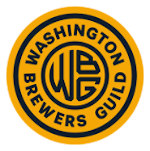The 2016 hop harvest season is upon us and according to the experts, this is going to be a record year, with the total amount of acreage farmers dedicated to hops in 2016 up 17 percent and harvest yields expected to range between average and exceptional. Still, the hop industry looks at the situation with as much caution as they do exuberance, according to information I received today from Hop Growers of America.
Following last year’s dismally dry growing seasons in both the U.S. and Europe, brewers without hop contracts struggled to get their hands on those precious, popular hop varieties that beer drinkers crave. Hopefully this year’s strong crop helps remedy that situation. As usual, breweries with hop contracts should not be affected either way.
Hop contracts, which are long-term agreements between hop suppliers and breweries, guarantee (in theory at least) that breweries will get all the hops and the particular varieties they need at an established price, protecting breweries from inevitable market fluctuations and helping farmers plan for the future. Among other things, hop contracts help farmers secure the loans needed to expand their hop acreage. Still, in private conversations, some brewers will tell you they feel hogtied and held hostage by hop contracts. But I digress. It’s a discussion for another day.
In 2016, U.S. hop acreage is in its fifth consecutive year of growth, up another 17 percent in the Pacific Northwest and 18.5 percent nationally (the U.S. produces 40 percent of the global hop supply). The United States Department of Agriculture estimates 13 million additional pounds of hops incoming this year, which would mark a new record of 91.8 million pounds for Northwest producers who produce over 96 percent of the U.S. crop, a 16 percent increase from 2015. According to the USDA-NASS report, “Many baby yards [new hop acreage] in Washington and Idaho are exceptional, with production between 50 and 100 percent of mature yields expected.”
That’s all good news, right? Kind of. Last month the International Hop Growers Convention (IHGC) released a 2016 world hop crop projection of 221.7 million pounds, 15.7 percent higher than 2015 production. While some are rejoicing at the yet-again large increase, some experts in the hop industry are celebrating cautiously. IHGC experts last month urged caution as further expansion is considered, to avoid surplus production. Surplus production might sound good to consumers, but it doesn’t necessarily sound good to farmers. As consumers, we want the farmers to be happy so they keep pumping out the hops covet, developing new varieties, and feeding the breweries we love.
“We have seen the downside of this market before due to oversupply,” said Ann George, Executive Director, Hop Growers of America, an Washington-based organization that promotes American-grown hops. “While we see a clear need, thanks to long shelf life, cost, and long-term commitment of growing hops, we encourage responsible contracting to ensure a stable market in terms of price and availability.”
For brewing years 2016 and 2017, global beer output is expected to decline 2 to 3 percent. Only strong growth in the craft beer segment will offset the overall losses in global beer production. According to a recent release from Brauwelt International, American craft beer production volume increased 8 percent during the first half of 2016.
In other words, less beer production overall, but more craft beer production is expected, further solidifying the relationship between hop farmers and craft breweries.
Cheers to our sponsors, like…


































Was just out at Van Horn Farms yesterday getting some fresh hops. Everything looks really good this year. Can’t wait for fresh hop ales to start popping up and the Fresh Hop Ale Festival in October!